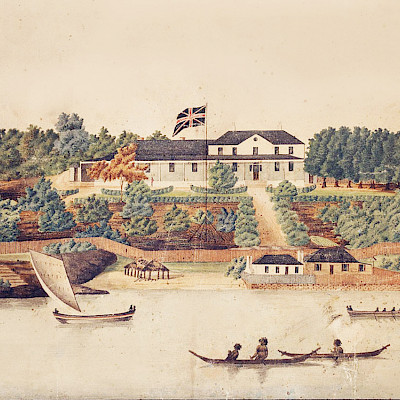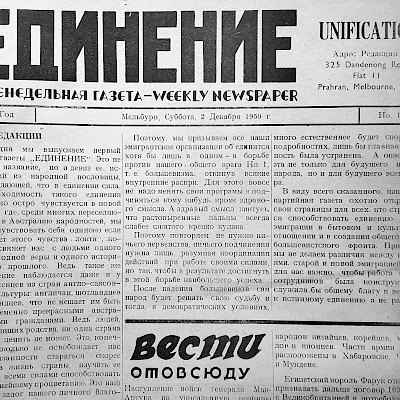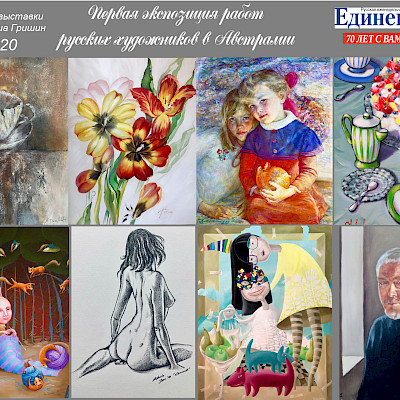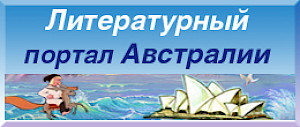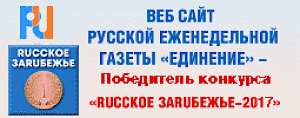A long time ago, more than eighty years past, on 4 August 1931, a doctor died in Harbin: a real one, not a fairy-tale Doctor Aybolit!
Virtually all the city’s inhabitants knew him. The doctor’s name was Vladimir Alekseevich Kazem-Bek. Everyone knew that he didn’t ask for money from the poor for his services, only for medicine, and that he was always ready to come to the aid of even his poorest patient. He would fight for the life and health of anyone, regardless of the size of their purse. Everyone knew about this, but what “helped” them to appreciate the scale of the loss of this great doctor for “Great Harbin”, as it was called, was — as awful as it is — his death. No one could say how many people Vladimir Alekseevich managed to do good to. When the pallbearers were carrying his coffin along Kitaiskaya Street towards the Holy Iveron Icon Church for the conclusion of his funeral service, all the neighbouring streets were so tightly packed with people that it was easier from two or three blocks away to go round this mass of people weeping and praying than attempt to squeeze through in the direction
you needed to go. Thus bade Harbin farewell to its beloved doctor…
We all come from childhood
Volodya was born on 14 February 1892 in Kazan into the family of the doctor Alexei Nikolaevich Kazem-Bek. His distant ancestors were influential Persian princes, and his surname, if written in full, read as Mirza Kazem-Bek. Volodya’s father was a renowned Kazan University professor, to whom patients not only from the Volga Region, but also from faraway Siberia, would come to receive treatment. He would just as conscientiously treat both his rich and poor patients. At his clinic, a free admission day — one day a week — was introduced for needy patients. The local poor were glad and thankful to make use of such a benefit.
At the age of five and a half, Volodya fell ill. A tumour appeared on his leg after it had been badly bruised, and doctors diagnosed the illness as tuberculosis of the bone. He was confined to his bed, and little Volodya virtually never went outside. Only in the warmer months would he sit on a small bench in a park in the city and watch with sadness from a distance how those the same age as him frolicked about. No one made fun of him, but he felt like an outcast all the same. He had a very strong will: when he was having his operation, he refused to be administered anaesthesia, and not even once did he start crying nor utter a single sound! Volodya felt better after the operation; he was already no longer being tormented by terrible pains, but he was left with a pronounced, lifelong limp…
Vladimir Kazem-Bek was a very unusual child. He read a lot and had an exceptional memory. He was very observant, straightforward with others and highly sympathetic to others’ pain or illness. He was always modest and benevolent. As his teachers, friends and relatives who watched Volodya’s development closely said — he had what they called a heart of gold. Having suffered so much as a child, the future doctor remembered every minute how unbearable pain was and treated others’ pain like his own. Only this could explain all his later life, filled with compassion for his patients and self-sacrificing service to them!
In 1908, when the boy’s health had improved, Volodya went straight to year seven at the Third Kazan Boys’ Gymnasium, which he finished in 1910 with a silver school medal. Seeing the example of his father before him, Vladimir takes the logical decision: he starts studying at the faculty of medicine at the Imperial Kazan University, one of the best in Russia. The outbreak of the First World War found V. A. Kazem-Bek in his fifth year, and without much hesitation he goes to volunteer on the front at his very first medical rank of what was once called zauryad-vrach (“warrant doctor”).
After spending about a year serving on the front, he returns to Kazan for a short time in 1915, where he passes his final examinations with flying colours.
From Kazan to Harbin: Three years of losses…
After returning to the front, he began to head the Red Cross air ambulance. Doctor Kazem-Bek’s good name quickly spread along the front line. He didn’t just devote his doctor’s knowledge and skill to the wounded — he gave them part of his big heart, trying in every way possible to alleviate their suffering. His reputation for professionalism and his kindness spread all along the front, and quite often would the medical orderlies hear the request of the wounded to “take me, brother, to the hospital where the lame doctor works!”
The time of hardship that had begun in Rus forced Vladimir Alekseevich to suffer his mother’s decease, the loss of his home in Kazan, the death of his father in faraway Tomsk and the virtual break-up of his once close family — all his brothers and sisters departed in all directions… In the summer of 1919 he takes up the position of doctor at the Academy of the General Staff in Omsk and… already a year later, he finds himself in Harbin…
In the city on the Sungari, Kazem-Bek’s talent as a doctor and as a healer of human souls would fully manifest itself. He starts working at the City Hospital and developing a private practice. But before long he had to turn down work at the hospital: the number of patients wanting to have him as their doctor grew so quickly that there would be no time left to work elsewhere. The most wonderful thing was that the doctor not only treated many needy patients for free, but he too himself would help them some more. The doctor sometimes gave money to the paupers for Easter or other festivals, and sometimes he brought them things or produce. He had the gift of politely not asking the priest for remuneration for his work, saying that because of his lack of time he himself rarely went to church and hoped that the father would pray for him. He didn’t take from his fellow countryfolk in Kazan: “You can return it when we come back to Kazan.” He treated everyone: the rich businessmen, the railway workers, the dockers at the port, the city slum inhabitants who had let themselves go and the beggars from the markets who had ruined themselves with drink.
In winter, during cold season, when the number of call-outs was particularly high, he would sleep in his armchair, by the telephone, still in his outerwear so that he could reach the patient as quickly as possible and administer first aid to them. And one of these call-outs proved fateful for the doctor! A little girl, sick with diphtheria, was dying of asphyxiation. She needed hospitalisation and an urgent operation, but there was neither the time nor the opportunity to get to a hospital quickly. He had to chance it. As an experienced doctor, Kazem-Bek realised what this risky move could cost him. But he acted, as always — the patient’s health, and even more so their life, was most precious of all! He saved the little girl by using a cocktail straw to aspirate the pus from the tumour. The child could breathe! The crisis was past, and the sick little girl started to get better (she would live to ninety- two). But two days later, the doctor felt that he was falling ill…
Vladimir Alekseevich Kazem-Bek was buried at the New Cemetery, next to the chancel of the Holy Dormition Church. The people of Harbin debated a long time: what monument would they erect? They held a design competition, determined the winners and even managed to give out prizes to them, but they came to their senses in time. The doctor would never have approved of such a foolish waste. Finally, they reached the only right decision — gather donations and use them to open a free hospital named in honour of Kazem-Bek! Such a clinic was soon opened at the Our Lady of Kazan Monastery. A very modest monument, however, was erected, with a large cross and a white (like a doctor’s smock) marble gravestone.
The story of the monument to the doctor
I saw this monument for the first time in 2010, when the Russian Club started drawing up a plan for the graves in the Russian section of the Huangshan Cemetery. It was without a portrait, and the gravestone and the seating from the two small benches had been lost. Most of the railing’s metal parts had become scrap. But what could we do back then? We wrote down the number of the grave, 2.6.10, and the dates of birth and death, 14/11/1892–04/08/1931, and we photographed it. There was nothing we could do back then.
But in 2011, Chinese authorities permitted us to fix up four graves of priests and two obelisks from the time of the Russo-Japanese War. The expenses for the obelisks (a large part) were defrayed by the Harbin-Chinese Historical Society (HCHS), Sydney, Australia. The Harbin Russian Club helped in this good cause by organising the work and inspecting its quality. In the winter we discussed plans for the new year; our ideas were almost completely the same as those of the Australian Harbiners. And then in the spring of 2012 the president of the HCHS, Igor Kazimirovich Savitsky, with his wife and assistant, Alla, came to Harbin on a working visit. A plan of the work was drawn up and agreed with the Church of the Intercession’s Orthodox community; its main item was the major repairs of the monument to Doctor Kazem-Bek.
We realised the full responsibility lying with us and with sincere agitation began preparations. The work was put out to tender among three contractors, and a contractor was decided on based on minimal cost of the work and technical approach to the task. What won us over with this contractor was that in literally three days they had produced not only an estimate, but also a model of the restored monument executed in isometric view on a computer. Our work had begun.
As a preliminary, the “general client” (Igor K. Savitsky), as he was known, and I, as they say, looked shoulder to shoulder through all the documents on the monument to Kazem-Bek. The monument that is at Huangshan differs very seriously from the first monument that was at the Holy Dormition Cemetery. We were interested first and foremost in the colour of all the monument’s features and their dimensions, but we didn’t succeed in finding a description of the initial monument. Whether there was an inscription on the white gravestone remained unknown. For a long time we were unable to find a good-quality photograph of the doctor. But help happened to arrive…
In the summer, three nice young ladies arrived from the Baratynsky Museum in Kazan. The Kazem- Bek and Baratynsky families were long-time friends; it’s a well-known fact. They even married into each other’s family. After finding out via internet that the museum employees would be coming, I began to ask them to bring a photograph of Kazem-Bek, and it is this photograph, obtained with the help of the fellow countryfolk of the hero of our story, that now adorns the monument we restored.
Together we did a good deed, and I want to say thanks and send my best regards to all the participants: the Harbin city administration, for understanding the importance for us, the Russians, to preserve these monuments and for supporting our initiatives; and I send my regards to all the old Harbiners from Australia; the new generation of Russians in the city on the Sungari, united by the Russian Club; the members of the Chinese Orthodox community at the Church of the Intercession; the Chinese stone carver repair workers and the historians from Kazan.
Such a diverse team of participants in this work also reminds us of the love that was felt by the people of Harbin for the good Doctor Kazem-Bek.
Sergei Eremin, Harbin, China
Translated by Samuel Brotchie
Translator’s note
This translation is a translation of the original text and was completed by me in 2020 during my bachelor honours degree programme in the field of Russian.
I am not a professional translator and have no formal translation qualifications. Any mistakes in this translation should be considered in this context. Any views expressed in this translation are not a reflection of my views.
If any text in this translation contains text from external sources, this is indicated in this translation, and the details of these sources can be found in a list at the end of this translation.
I feel privileged to have had the opportunity to produce this translation, and I hope that it is of benefit to the literature on Harbin Russians and to the Unification community.
Samuel Brotchie
February 2021





